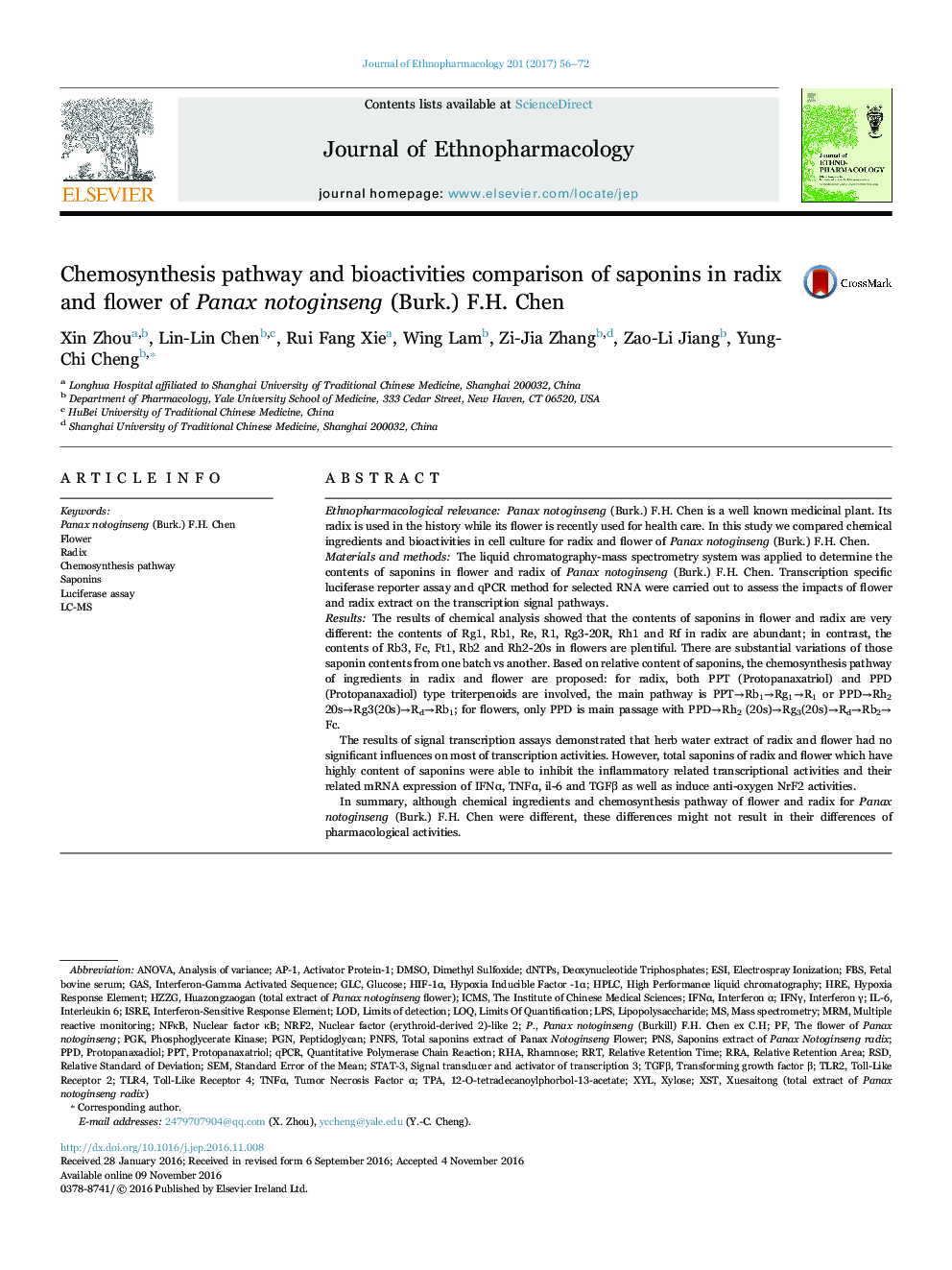| کد مقاله | کد نشریه | سال انتشار | مقاله انگلیسی | نسخه تمام متن |
|---|---|---|---|---|
| 5556236 | 1560361 | 2017 | 17 صفحه PDF | دانلود رایگان |

Ethnopharmacological relevancePanax notoginseng (Burk.) F.H. Chen is a well known medicinal plant. Its radix is used in the history while its flower is recently used for health care. In this study we compared chemical ingredients and bioactivities in cell culture for radix and flower of Panax notoginseng (Burk.) F.H. Chen.Materials and methodsThe liquid chromatography-mass spectrometry system was applied to determine the contents of saponins in flower and radix of Panax notoginseng (Burk.) F.H. Chen. Transcription specific luciferase reporter assay and qPCR method for selected RNA were carried out to assess the impacts of flower and radix extract on the transcription signal pathways.ResultsThe results of chemical analysis showed that the contents of saponins in flower and radix are very different: the contents of Rg1, Rb1, Re, R1, Rg3-20R, Rh1 and Rf in radix are abundant; in contrast, the contents of Rb3, Fc, Ft1, Rb2 and Rh2-20s in flowers are plentiful. There are substantial variations of those saponin contents from one batch vs another. Based on relative content of saponins, the chemosynthesis pathway of ingredients in radix and flower are proposed: for radix, both PPT (Protopanaxatriol) and PPD (Protopanaxadiol) type triterpenoids are involved, the main pathway is PPTâRb1âRg1âR1 or PPDâRh2 20sâRg3(20s)âRdâRb1; for flowers, only PPD is main passage with PPDâRh2 (20s)âRg3(20s)âRdâRb2âFc.The results of signal transcription assays demonstrated that herb water extract of radix and flower had no significant influences on most of transcription activities. However, total saponins of radix and flower which have highly content of saponins were able to inhibit the inflammatory related transcriptional activities and their related mRNA expression of IFNα, TNFα, il-6 and TGFβ as well as induce anti-oxygen NrF2 activities.In summary, although chemical ingredients and chemosynthesis pathway of flower and radix for Panax notoginseng (Burk.) F.H. Chen were different, these differences might not result in their differences of pharmacological activities.
The chemosynthesis pathway of ingredients in radix and flower are proposed:for radix, both PPT (Protopanaxatriol) and PPD (Protopanaxadiol) type triterpenoids are involved, the main pathway is PPTâRb1âRg1âR1 or PPDâRh2 20sâRg3(20s)âRdâRb1;for flowers, only PPD is main passage with PPDâRh2(20s)âRg3(20s)âRdâRb2âFc.The results of signal transcription assays demonstrated that herb water extract of radix and flower had no significant influences on most of transcription activities.However, total saponins of radix and flower which have highly content of saponins were able to inhibit the inflammatory related transcriptional activities and their related mRNA expression of IFNα, TNFα, il-6 and TGFβ as well as induce anti-oxygen NrF2 activities.In summary, although chemical ingredients and chemosynthesis pathway of flower and radix for Panax notoginseng (Burk.) F.H. Chen were different, these differences might result in their differences of pharmacological activities although our transcription pathway analysis in cell culture study may not reflect the biological activities.196
Journal: Journal of Ethnopharmacology - Volume 201, 6 April 2017, Pages 56-72